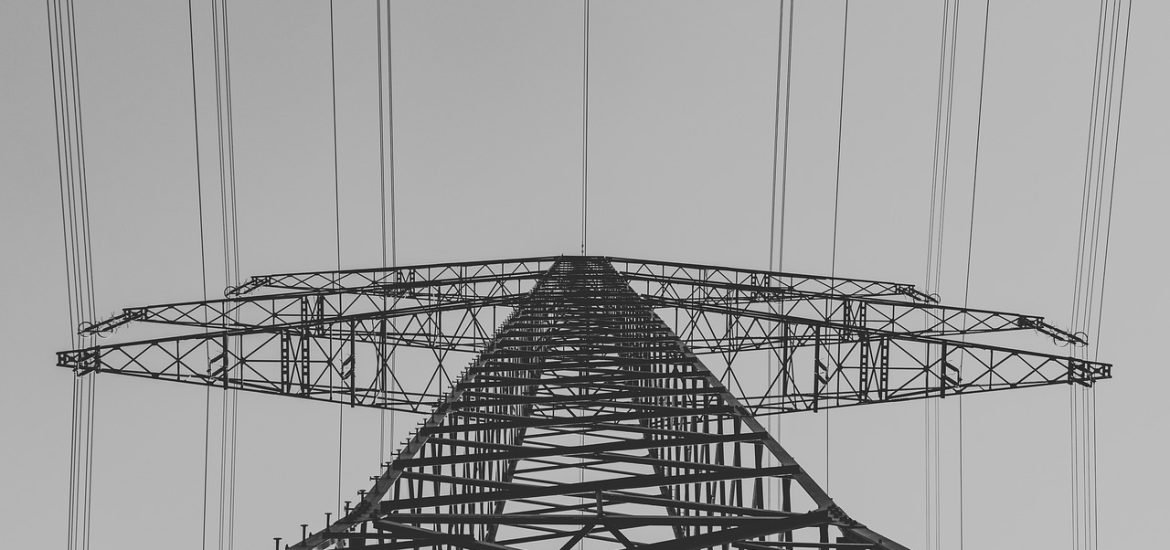
Amidst the proceedings of COP 28, a significant milestone was reached as 22 nations came together to endorse an agreement aimed at advancing nuclear energy initiatives. This pivotal accord appears to herald the resurgence of nuclear energy on the global stage. In light of this development, esteemed scholars Samuel Furfari, Professor at the University of Brussels, and Ernest Mund, Emeritus Extraordinary Professor at UCL, enlighten us on the imperative to bolster electricity production, the rich history of civil nuclear technology marked by constant innovation, and offer insightful policy reflections. Join us for the inaugural episode of this enlightening three-part series.
Abstract
Although electricity today accounts for less than a quarter of the final energy demand, perhaps more than other energy sources, electricity is vital for virtually every aspect of modern life. And this importance will continue to grow in the years to come. Without electricity, the entire economy grinds to a halt, which is why the authorities want to ensure permanent and affordable production.
We shall see that renewable energies are favoured by the EU and its Member States despite several important limitations namely intermittency and random energy production. These limitations need to be considered. The first part of this article will develop this item. The need to provide abundant and cheap energy means that we must turn to more conventional energy sources; in particular to nuclear power which, after more than 60 years of industrial development, has shown strong technological and economic promises. The second part of this paper will present the potential of the many innovations underway in the field of nuclear research.
Technologies have something in common with the living world: they are in constant evolution. The process is slow, taking almost a century to produce disruptive changes. Starting in 1950, nuclear technology should be very different in 2050 because of current R&D. Factory-made modules with reduced power sizes known as SMR (Small Modular Reactors) will address some of the economic and safety concerns. Emergent technologies dubbed Generation-IV will considerably enlarge the applications towards water desalination, high-temperature heat and naval propulsion. Adoption of different reactor coolant fluids (helium gas, liquid heavy metals or molten salts) instead of water should reduce the safety concerns. Combining specific choices of reactor fuels with adequate neutron spectra might contribute to the elimination of long-lived nuclear wastes. Ignoring the intricacies of technology change and persisting blindly in today’s hostile attitude can lead to environmentally detrimental choices.
The evanescence of electricity limits the use of renewable energies.
Electricity is a strange energy carrier. It is evanescent in the sense that it can only exist if it is simultaneously produced and consumed. It exists because it is used at the very moment it is generated. This unavoidable and unique characteristic makes it particularly difficult to manage through the three stages of production, transport and distribution. A blackout is a major power outage, i.e. an interruption of supply not caused by the grid operator, which must affect at least 1,000 people for at least one hour, with consequences of at least one million hours of work. This failure can be caused by a fault in a production centre, transmission lines, substations, or other parts of the power grid that are damaged, a short circuit, or an overload of the line. Large-scale power outages are often difficult to resolve quickly. They can last from a few minutes to a few hours depending on the origin and configuration of the network, so they should be avoided at all costs (MUND, 2022).
Wind turbines and solar photovoltaics produce intermittent and variable electricity that severely disrupts the power grid and leads to an increase in sale prices to the end customer.
Figure 1 shows the variation of electricity generation in 2019 from a 100 MW wind farm operating in southern Italy. Figure 2, for the same installation, shows that the variability of the intermittency, results sometimes in a total absence of production. Production can be zero for a few consecutive days (here at 10:45 p.m. on September 1 and 2) and these are very abrupt and significant power variations that severely disrupt the grid. It is incomprehensible that a professor at the École Polytechnique of the Université Libre de Bruxelles claims that they are only variable and not intermittent.

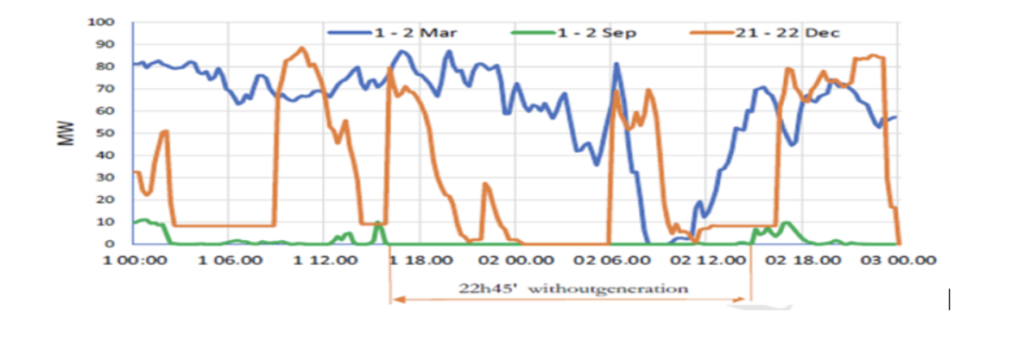
It is inconceivable that intermittent and variable energies (wind and solar) should be promoted by claiming that we must get used to being without electricity for one or two days (de Callataÿ, 2020). This ignores the essential role of electricity for health and safety, not to mention the economic damage it causes, especially in companies linked to the cold chain. It also means contempt for generations of electrical engineers who have always made it a point of honour to ensure the continuity of electricity supply.
The five-year average load factor for wind energy in the EU is 23%, and that of solar energy is 11%. In other words, the more facilities of this type are built, the more conventional and controllable power plants that can keep up with the ever-changing demand for electricity are needed at the same time. The EU was able to generate electricity from wind turbines and solar photovoltaic panels because there was a sufficiently stable electricity grid consisting of thermal power plants (coal or gas), hydropower plants and nuclear power plants.
The example of the Gorona del Viento project of five wind turbines – 11.5 MWe – carried out by the Spanish government and the European Commission on the island of El Hierro (Canary Islands) illustrates the illusion of renewable technologies, not to mention the financial aspects that prohibitively eliminate any development of these expensive projects. In 2022, 100% coverage was achieved for 1,008 hours (1), or 11% of the time. Fossil fuels were therefore needed for 89% of this time. In 2022 (2), producing 32,587 MWh, the facility operated with a load factor of 32%. This project, which aimed to demonstrate that by accumulating wind energy in a water reservoir that was to be used as electricity storage, it demonstrates that African countries should no longer have any illusions about the development of renewable energies for their electricity generation.
The world’s need for electricity
This reality is now understood and explains why growing countries are reluctant to develop wind and solar farms. Those who do so do so to benefit from the largesse of donors, whether state, international or private. Africa, for example, is desperately short of electricity. Five hundred and sixty million Africans do not have access to electricity and the International Energy Agency predicts that by 2030 there will be 600 million more, as the development of electrification is not sufficient to compensate for the increase in demand created by population growth. A country that invests in a wind farm must at the same time invest in a conventional installation that will operate at least three quarters of the time, and probably more since Africa is a less windy continent than Europe.
The increase in population and the electrification that is essential for a better quality of life will lead to greater energy consumption. The combination of data from the World Bank and the United Nations shows that electrifying countries increases life expectancy. This translates into a reduction in infant mortality. Electrification also improves the quality of life, as measured by the United Nations’s HDI parameter.
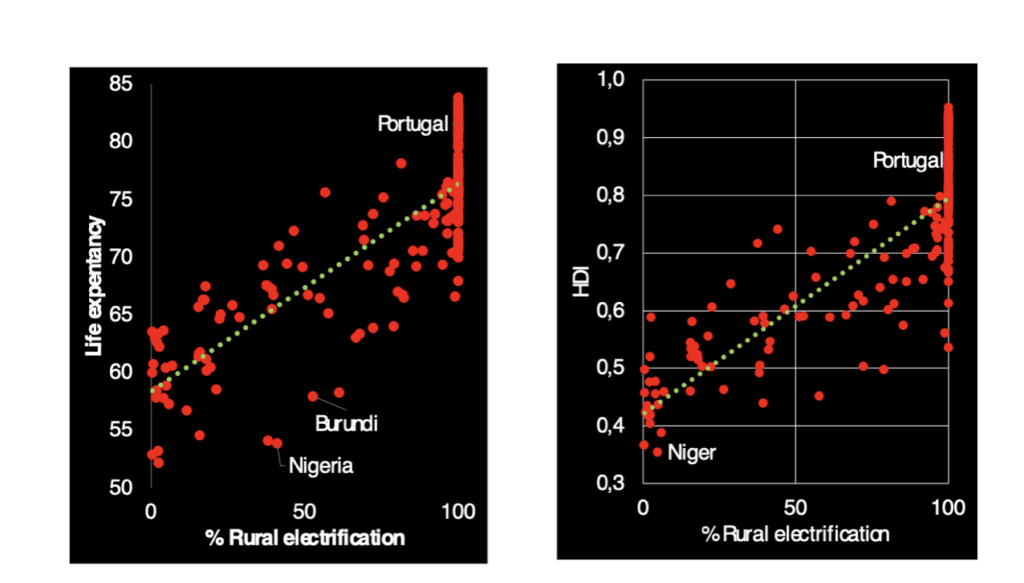
The world of tomorrow will inevitably be much more electrified, including in the countries of the Global South. Much of this new electricity demand will come from coal, which provides the cheapest calories and has no geopolitical constraints. Another part will be based on natural gas, which is available on all continents and can be easily transported by LNG carriers, unlike the constraints of fixed gas pipelines.
COP recognises that the world needs nuclear energy
But this growth in demand will be such that fossil fuels will be used mainly for thermal purposes, where they will remain indispensable for a long time. In parallel with the development of large hydroelectric dams to be built in Africa, nuclear power plants will also have to be built in Africa if its economic development is to be ensured. The gradual advent of advanced nuclear reactors is also contributing to the satisfaction of diversified needs such as high-temperature heat demand, district heating, water desalination and naval propulsion (Furfari, Mund, 2022).
That is why, in December 2023, for the first time in the conclusions of the Conference of the Parties to the United Nations Framework Convention on Climate Change (COP), nuclear energy will be mentioned (‘Accelerating technologies to zero and low emissions, including, inter alia, renewables, nuclear’) (Conference of the parties, 2023). Of course, it goes hand in hand with the development of renewable energies, but it should be noted that while previously the debates around the COPs were essentially led by opponents of nuclear power, this recognition underlines that this energy is indeed making a comeback.
Indeed, at the beginning of COP28, 22 countries signed an agreement to develop nuclear energy. Even though it took place on the sidelines of the conference, this meeting marks a defeat for the opponents of nuclear power, because COP28 will be remembered as the year of the return of nuclear power, since these countries have shown their determination to revive it.
It must be admitted that development in African countries will be slow, as the basic conditions for the deployment of a complex industry have not yet been established (think of the non-proliferation aspects and the need to create independent security agencies, as is the case in the EU). But the gradual demand for electrification in countries with under-equipped grids is inevitable. As their needs increase gradually, they will rely on small-scale power plants, installed as the needs increase, which precisely corresponds to the development of SMR units.
The limited development of wind energy and solar photovoltaic energy in the EU can only encourage the countries of the Global South to consider the use of nuclear energy, as the EU did in the second half of the 20th century.
A reality that is becoming increasingly evident
The electricity produced by nuclear power plants is extremely stable over time, which facilitates the management of the transmission and distribution network. In terms of volume, nuclear energy is the largest source of electricity in the EU, accounting for 25% of demand, compared to 14% for wind and 5% for solar. One thing is clear: nuclear energy is the main form of electricity in the EU.
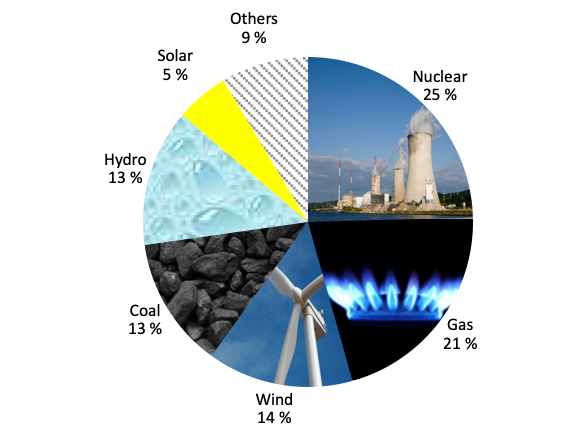
As Sweden is often used as an example of a country promoting renewable energy, it should be noted that its electricity generation is not done through modern renewables. In 2019, nuclear electricity accounted for 43% and hydropower 39%, far ahead of wind (10%). Naturally, the current Swedish government has decided to give a massive boost to the development of nuclear energy. It intends to allow the construction of two new conventional nuclear reactors by 2035 to meet the growing demand for clean electricity from industry and transport, and has said it is ready to cover part of the cost. By 2045, the government wants to have the equivalent of 10 new reactors, some of which are likely to be small modular reactors (SMRs).
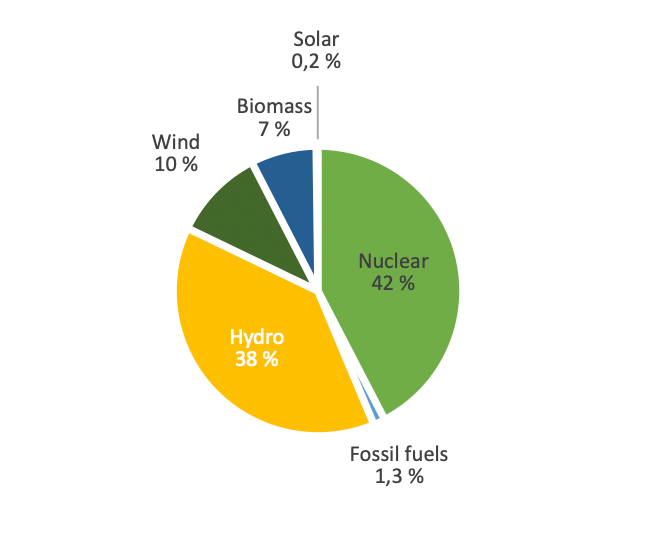
Poland, which the Soviet guardian did not want to equip with nuclear power plants during the Soviet era, now wants to definitively get rid of Russian tutelage and is committed to nuclear energy to avoid being too dependent on both its Silesian coal and the gas it must import. Westinghouse Electric Company, Bechtel and Poland’s Polskie Elektrownie Jądrowe signed an engineering services contract in September 2023 for Poland’s first nuclear power plant at the Lubiatowo-Kopalino site in Pomerania. Poland’s first AP1000 nuclear reactor (1000 MW) is expected to enter commercial operation in 2033.
Unlike Poland, Hungary has been producing nuclear electricity at the Paks site since 1982. In January 2014, the government signed an agreement with the Russian company Rosatom for the construction of two new reactors in Paks.
The challenge of time also impacts the Green Deal
The European ‘Green Deal’ adopted in 2020 should drastically reduce the continent greenhouse gas releases (GGR) by 2030 and lead to carbon neutrality in 2050. With Member States like Austria, Germany and Luxembourg fiercely against nuclear energy, this policy scheme means the adoption of essentially 100% renewable energy, a detrimental choice for environmental reasons as shown in this paper (Furfari and Mund, 2021). The arguments of nuclear deniers run essentially against large building costs, the fear of potential accidents and the legacy of long-lived nuclear wastes (Sovacool and Cooper, 2008). Considering the present state of the technology, these arguments are partially justified. However, there is such a large variety in selecting the basic elements to build a neutron chain-reacting system that the technology could soon become very different from its state inherited from Cold War (Ud-Din and Nakhabov, 2020).
Though not strictly Darwinian, the evolution of technologies has much in common with the evolution of the living world as outlined by Brian Arthur (Arthur, 2009). Both evolve on their own time scales according to similar principles. The emergence of a new technology usually corresponds to the satisfaction of social needs not yet covered, or to the implementation of recent scientific discoveries. As soon as a new technology emerges, it is coupled some way or another to existing technologies to form a new branch of a tree structure. Structural deepening and internal replacement are two important mechanisms presiding over the evolution of a new technology. Trial and error mechanisms allow at any time the adoption of the most performing auxiliary tools. The evolutionary process is autopoietic in the sense that a technology fully participates in its own transformation. Once different varieties of new technology get access to the market, the latter selects the variety satisfying best its needs. But, unlike the Darwinian biological world where long-term domination is exercised by the most robust elements, technologies don’t necessarily obey the rule. Market dominance may go to some suboptimal version. As soon as a technology exerts dominance over its competitors for whatever reasons, one speaks of lock-in. Instances of suboptimal technological lock-in abound on the market (Cowan & Hulten, 1996). In the nuclear field, we shall first have a look at the light-water (LWR) technology, appropriate example of suboptimal dominance (Cowan, 1990) and afterwards explain the reasons why optimism must prevail.
Part 1/3.
Part 2 : Nuclear power takes off (Part 2): the ongoing evolution of reactors
Part 3 : Nuclear power takes off (Part 3) : Back to Euratom ?
(1) https://www.goronadelviento.es/
(2) https://www.goronadelviento.es/wp-content/uploads/2023/02/00-2022-CHGV22Parte_anual-contrata.pdf
Image par Jarosław Kwoczała de Pixabay
References
Arthur B. W. (2009). The Nature of Technology – What it is and how it evolves. Penguin.
Cowan R. (1990). Nuclear Power Reactors: A Study in Technological Lock-in. The Journal of Economic History, volume 50, 541–567.
De Callataÿ, Etienne, Shedding light on the risk of blackout, L’Écho, 10 October 2020, https://www.lecho.be/entreprises/energie/faire-la-lumiere-sur-le-risque-de-blackout/10256419.html
Furfari S., & Mund E. (2020), Renewable energy in the EU: from perception to reality, Energy Literacy, 27-11-2020, https://www.connaissancedesenergies.org/tribune-actualite-energies/energies-renouvelables-dans-lue-de-la-perception-aux-realites.
Furfari S., & Mund E.H. (2021). Is the European Green Deal Achievable? Eur. Phys. J. Plus 136:1101.
Furfari S., & Mund E. (2022). Advanced nuclear power for clean maritime propulsion, Eur. Phys. J. Plus 137:747.
Sovacool B.K., & Cooper C. (2008). Nuclear Nonsense: Why Nuclear Power is No Answer to Climate Change and the World’s Post-Kyoto Energy Challenges. 33 Wm. & Mary Envtl. L. & Pol’y Rev. 1, https://scholarship.law.wm.edu/wmelpr/vol33/iss1/2
Ud-Din Khan S., & Nakhabov A. (2020). Nuclear Reactor Technology Development and Utilization. Elsevier.
Bel article.
L’Allemagne a 3,7 fois plus d’éolien et de solaire installés que la France, mais n’arrive toujours pas à réduire ses émissions de CO2. L’Allemagne émet 10 fois plus de CO2 que la France et a une puissance installée 1,8 plus élevée pour compenser l’intermittence des ENR. Pendant que la France a une électricité à 97% bas-carbone depuis sa transition énergétique réalisée au siècle dernier entre 1977 et 1999, l’Allemagne persévère. Elle préfère émettre du CO2 que de laisser tourner ses centrales nucléaires bas-carbone et sûres. En plein réchauffement climatique, l’Allemagne préfère la croisade contre le nucléaire plutôt que la croisade contre les émissions de CO2. Malheureusement, le CO2 et les particules fines des centrales à charbon allemandes ne s’arrêtent pas à la frontière. En pleine crise du prix du gaz, l’Allemagne préfère utiliser du gaz pour sa production d’électricité. C’est ce qu’on appelle la logique écolo à défaut d’être éco-logique et économique.
This is an excellent summary of a possible future for nuclear power in Europe and eventuall for the world. It has many lessons for the United States and the world. Russia and China have excelled in advancing nuclear power and other nuclear technologies for over forty years.
The United States has been held prisoner by domestic anti-advanved nuclear power fear mongers, mass media, and similar thinking politicians since the 1970s.
Professors Samuel Furfari and Ernest Mund have written an outstanding summary of advances in nuclear power technology in the last fifty years.
What is needed are a complete rework of general government and nuclear regulatory policies for LNT (Linear No-Threshold), Collective Dose, and ALARA (As Low as Reasonably Achievable) Radiation Safety Guidelines, spent fuel reprocessing, high level radiation waste storage, and licensing procedures in general particularly in the United States.
A new view point is needed. Originally, nuclear power was developed under the assumptions of a peaceful world, (Atoms for Peace). That was optimistic thinking after WWII.
The electric power grid and power plants (not just nuclear) are so important for the real world in the future that everything related to electricity must include design costs and operation considerations for mass terrorist and war time events.
Thanks to Professors Furfari and Mund for an excellent paper.
Merci à ces experts de nous donner des explications essentielles pour parfaire notre connaissance.